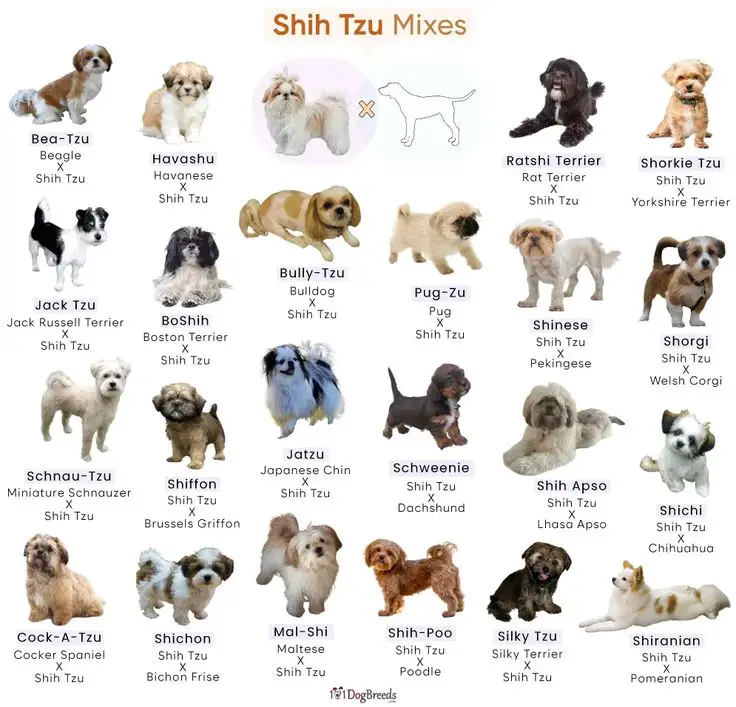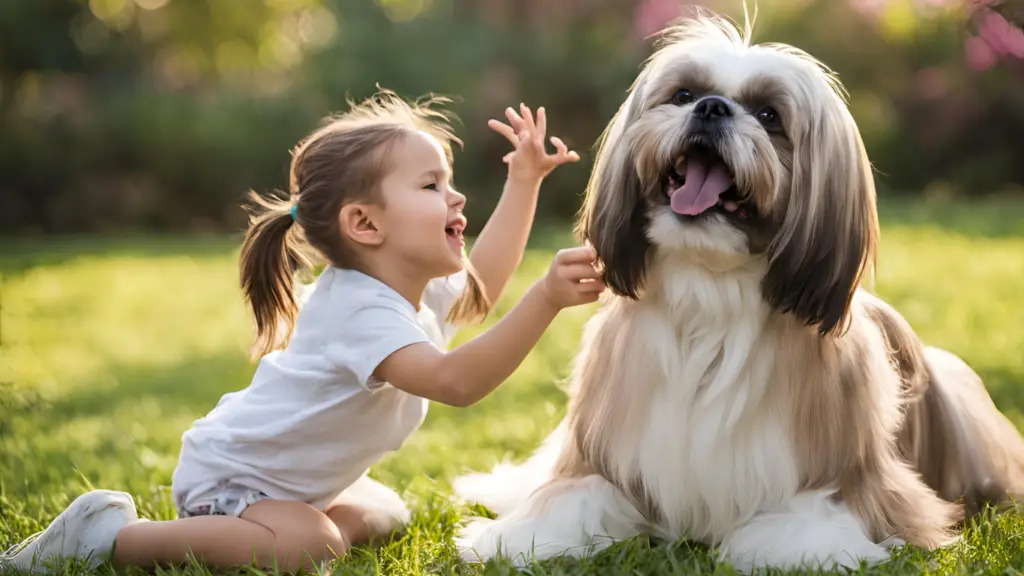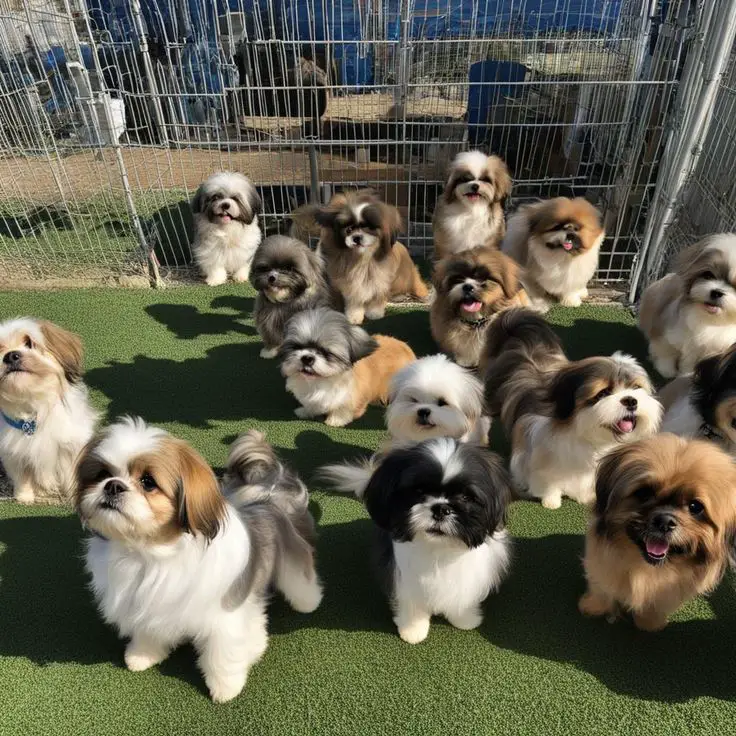
Shih Tzus, with their charming personalities and regal appearance, have captured the hearts of dog lovers around the world. However, their journey from ancient China to the modern day is a tale rich with history, culture, and fascinating developments. Understanding the history of Shih Tzus provides a deeper appreciation for this beloved breed. This comprehensive guide will delve into the origins, historical significance, and evolution of Shih Tzus, highlighting their journey from ancient China to their current status as cherished companions.
Origins of the Shih Tzu

The Shih Tzu’s origins can be traced back to ancient China, where they were bred to resemble “little lions.” This name, Shih Tzu, literally means “Lion Dog” in Chinese. These dogs were bred by crossing the Lhasa Apso or Tibetan Mountain Dog with the Pekingese. The aim was to create a dog that epitomized the grace and beauty revered in Chinese culture. The earliest records of Shih Tzus date back to the Tang Dynasty (618-907 AD). During this period, they were kept by Chinese royalty and nobility. Shih Tzus were highly valued for their companionship and were often gifted to foreign dignitaries and influential people.
Shih Tzus in the Ming and Qing Dynasties
During the Ming Dynasty (1368-1644 AD), Shih Tzus continued to be treasured by the royal court. They were often depicted in Chinese art, including paintings, tapestries, and sculptures, signifying their esteemed status. The breeding of Shih Tzus was a highly guarded secret, overseen by palace eunuchs. This ensured that only the finest dogs were produced and maintained within the royal households. The Qing Dynasty (1644-1912 AD) saw the continued prominence of Shih Tzus, particularly under the reign of Empress Dowager Cixi. She was an avid dog lover and played a significant role in shaping the breed. Empress Cixi kept a large number of Shih Tzus and was involved in their breeding, ensuring that only the purest and most beautiful dogs were kept in the imperial palace.

The Role of Shih Tzus in Chinese Culture
Shih Tzus were not merely pets; they were symbols of prosperity and good fortune. In Chinese culture, they were believed to bring good luck and were often depicted alongside images of Buddha, indicating their revered status. Their lion-like appearance was symbolic, as lions were considered protectors and guardians in Chinese mythology. The Shih Tzu’s role extended beyond companionship. They were integral to religious ceremonies and were sometimes used as guard dogs within the palaces, despite their small size. Their alertness and keen senses made them excellent at notifying their owners of any potential threats.
Shih Tzus and the Fall of the Qing Dynasty

The fall of the Qing Dynasty in 1912 marked a tumultuous period for Shih Tzus. The political upheaval and the collapse of the imperial system led to a decline in the breed’s population. Many royal breeding programs were disrupted, and the dogs were dispersed or lost. However, some of the breed’s enthusiasts managed to save and protect these precious dogs. European travelers and diplomats who had visited China began to take an interest in Shih Tzus. This helped in preserving the breed, as some dogs were taken back to Europe, where they were introduced to dog fanciers and breeders.
The Introduction of Shih Tzus to the West
The introduction of Shih Tzus to the West began in the early 20th century. European travelers and diplomats who had developed a fascination with the breed played a significant role in bringing them to Europe. The first recorded Shih Tzus in the West were brought to England and Norway. In 1930, Lady Brownrigg, an Englishwoman living in China, brought several Shih Tzus to England. She played a pivotal role in establishing the breed in the West and was instrumental in forming the first Shih Tzu Club in England. The breed quickly gained popularity due to its charming appearance and affectionate nature.

Establishing the Shih Tzu Breed Standard
With the growing interest in Shih Tzus in the West, the need for a standardized breed description became evident. The Shih Tzu Club of England, established by Lady Brownrigg and other enthusiasts, worked diligently to define the breed standard. The standard emphasized the Shih Tzu’s distinctive features, including their luxurious coat, short muzzle, and expressive eyes. It also highlighted their friendly and outgoing temperament. The American Kennel Club (AKC) recognized the Shih Tzu breed in 1969. This recognition helped in solidifying the breed’s status and popularity in the United States. Today, the Shih Tzu breed standard is maintained and updated by various kennel clubs worldwide, ensuring the breed’s characteristics are preserved.
The Popularity of Shih Tzus in the Modern Era

In the modern era, Shih Tzus have become one of the most popular companion breeds globally. Their charming personalities, coupled with their manageable size and striking appearance, make them ideal pets for families, singles, and seniors alike. Shih Tzus are known for their adaptability. They thrive in various living environments, from apartments to larger homes with yards. Their affectionate and loyal nature endears them to their owners, and their playful demeanor makes them great companions for children and adults.
Shih Tzus in Pop Culture
Shih Tzus have also made their mark in pop culture. They have appeared in movies, television shows, and even as celebrity pets. Their distinctive look and endearing personality make them favorites in the entertainment industry. Notable Shih Tzus in pop culture include the character “Gidget” from the animated film “The Secret Life of Pets.” Additionally, many celebrities, including Mariah Carey and Bill Gates, have been known to own Shih Tzus, further boosting the breed’s popularity.

Health and Care of Shih Tzus
Maintaining the health and well-being of Shih Tzus requires dedicated care and attention. Their long, flowing coats need regular grooming to prevent matting and tangling. Regular brushing and professional grooming sessions are essential to keep their coats in top condition. Shih Tzus are prone to certain health issues, including brachycephalic syndrome, hip dysplasia, and dental problems. Regular veterinary check-ups are crucial to monitor their health and address any issues promptly. Providing a balanced diet, regular exercise, and mental stimulation are vital to ensure the overall well-being of Shih Tzus. They thrive on interaction and companionship, so spending quality time with them is essential.
The Shih Tzu’s Role in Therapy and Assistance

Beyond being beloved pets, Shih Tzus have found roles in therapy and assistance work. Their gentle and affectionate nature makes them excellent therapy dogs. They provide emotional support and companionship to individuals in hospitals, nursing homes, and other care facilities. Shih Tzus are also used as emotional support animals (ESAs) for individuals with mental health conditions. Their calming presence and unwavering loyalty can provide significant comfort and stability to those in need. training Shih Tzus for therapy and assistance roles involves socialization, obedience training, and specialized training tailored to the specific needs of their handlers.
The Future of Shih Tzus

The future of Shih Tzus looks promising, with their popularity showing no signs of waning. The breed continues to capture the hearts of dog lovers worldwide. Ongoing efforts to preserve the breed’s health and characteristics are crucial to ensuring their continued success. Responsible breeding practices, health screenings, and education for potential owners are essential components of maintaining the breed’s well-being. By promoting responsible ownership and breeding, the legacy of Shih Tzus can be preserved for future generations to enjoy.
Conclusion
Exploring the history of Shih Tzus from ancient China to the modern day reveals a breed that has captivated hearts for centuries. Their journey from royal palaces to beloved companions worldwide is a testament to their enduring charm and appeal. Understanding the origins, cultural significance, and evolution of Shih Tzus enhances our appreciation for these delightful dogs. As we continue to cherish and care for Shih Tzus, we ensure that their rich history and legacy endure, bringing joy and companionship to countless families for generations to come.


